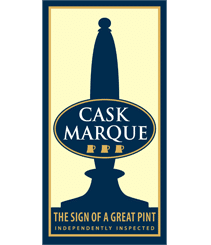As part of Cask Marque’s continued support for the cask ale industry, we have put together a series of guidelines on all aspects in the buying, storing and selling of cask ale to ensure it reaches customers in the perfect condition.
These can be used as a guide for licensees and staff alike – hopefully as a useful reminder or as a training guide.
The first of the weekly newsletter looks at how to ensure you have chosen the right cask ale range to suit your customers:
If you’re new to cask ale, or just starting out, the number of cask ales on the market can be overwhelming. Even if you’re an experienced cask ale retailer, the choice can be quite daunting. So, where do you start and how do you ensure you’re choosing the right brands for your business whilst offering customers a choice of flavours, colours and strengths?
The first point to consider is “what will my customers buy?” And surely the best way of finding out is to ask your customers directly. Listen to their feedback, ask what beers they like, and engage them in choosing your beer selection.
Recent research has shown that whilst established ‘real ale’ outlets rotate their range constantly, the majority of drinkers like to know there is always a familiar ale available permanently on your bar. It gives reassurance to existing drinkers that there will always be something they like available, whilst giving them the choice to try a guest ale or two when they fancy something different. Familiar ales also give new customers confidence in your cask handling skills – if you get the quality of these brands right they are more likely to stay for a second pint of that less recognised brand, and also encourage repeat visits.
So how do good cask ale pubs choose their familiar brand? They tend to look at three key factors:
Where The Beer Comes From:
Cask ale drinkers are very loyal to local breweries, and provenance is cited as a key reason why the cask ale market is growing
What Strength The Beer Is:
Too strong and it puts off mid week drinkers, look for a ‘session’ beer which can be enjoyed in moderation. Keep the darker, stronger and more unusual ales for weekends when drinkers are more likely to experiment
What Colour The Beer Is:
The majority of drinkers choose their beer by colour. 75% of regular cask drinkers choose a beer which is amber/copper in colour. This is the biggest selling category of cask ale, despite the proliferation of blonde ales and dark coffee coloured beers, so choose your permanent beer aligned to this colour scale

Cyclops notes are used on point of sale materials such as drip mats and posters, but perhaps more importantly, they are put on the back of pump clips enabling staff who don’t drink beer to describe how a beer looks and tastes to customers.
Let’s look at some of the other factors which influence your decision on your choice of range:
Seasonality can be a great indicator. Blonde ales which are similar in colour and strength to lager sell extremely well in summer time, keep the dark robust ales for autumn and winter. Look at calendarised dates – Hallowe’en and Christmas attract drinkers looking for a darker, toffee-flavoured beer, Easter and summer holidays attract drinkers looking for a thirst quenching lighter ale.
Look at brewers who will offer support – either through point of sale material (such as striking pump clips) or staff training and promotional evenings.
Consider your food menu as well. If you have traditional offering such as pies, roasts and sausages, go for traditional ales which compliment the caramelized flavours of roast meats. If you’re a bit more contemporary with your menu, think which wines go well with food. White wine goes well with salads, fish, chicken and light pasta dishes, so always ensure you have a lighter golden ale on offer.
The key to choosing your range is choice. Three ales of the same strength, colour and flavour profile will not offer customers any point of difference so they will tend to seek choice elsewhere.
It’s important to highlight the quality of the beer again. Good cask ale sites start small with one or two well kept cask beers, rather than a large range of beers, some of which may suffer quality problems because they are not achieving the throughput. Some of the best restaurants in the country have short menus because they know the quality of the produce in each of the dishes is excellent. The same applies for cask ale- a huge range of little known beers does not always indicate a well kept cellar or cellar master!


